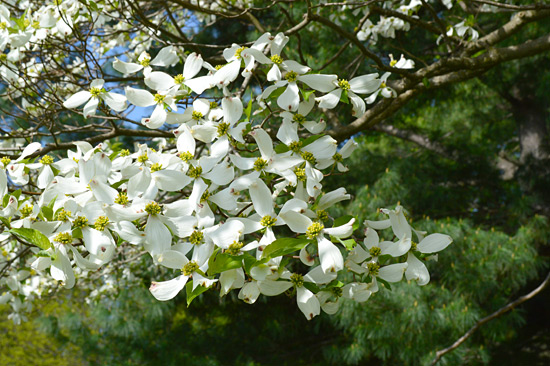 This past weekend I traveled to Louisville, Kentucky to visit a friend. It was my first time stopping in the city instead of driving through it on my way to some other destination. As I traveled south I spotted swaths of redbuds blooming throughout southern Indiana. When I arrived in Louisville, I was greeted by a beautiful display of flowering dogwood. The city was amidst the festivities of “Derby,” or the Kentucky Derby as an out-of-stater like myself would call it.
This past weekend I traveled to Louisville, Kentucky to visit a friend. It was my first time stopping in the city instead of driving through it on my way to some other destination. As I traveled south I spotted swaths of redbuds blooming throughout southern Indiana. When I arrived in Louisville, I was greeted by a beautiful display of flowering dogwood. The city was amidst the festivities of “Derby,” or the Kentucky Derby as an out-of-stater like myself would call it.
Cherokee Park
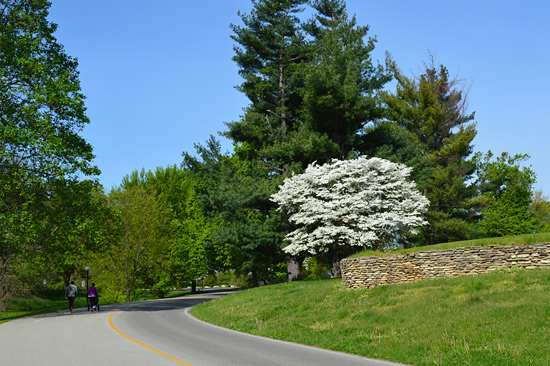 During the long weekend I spent in the city, my friend treated me to not one but two trips to Cherokee Park. It was wonderful! The park was designed in 1891 by Frederick Law Olmstead, the same landscape architect who designed Central Park in New York. Olmstead created “the large urban park, devoted primarily to the experience of scenery and designed so as to counteract the artificiality of the city and the stress of urban life.”
During the long weekend I spent in the city, my friend treated me to not one but two trips to Cherokee Park. It was wonderful! The park was designed in 1891 by Frederick Law Olmstead, the same landscape architect who designed Central Park in New York. Olmstead created “the large urban park, devoted primarily to the experience of scenery and designed so as to counteract the artificiality of the city and the stress of urban life.”
Cherokee Park in Louisville is 389 acres, containing large meadows, rolling hills, groves of trees, and woodland areas. The whole park rises upward through a valley surrounding Beargrass Creek. In early spring, the city utilizes the creek and park as overflow to help control flood waters. Even as we strolled, my friend pointed out some debris still in need of being cleared from the lower limbs of trees near the water’s edge.

We came across some people planting trees on one of the hillsides within the park. Having become more involved in tending my own city’s urban canopy, I immediately started a conversation with them. The young men were planting a stand of Tilia Americana, commonly called American Basswood, which they said was a favorite of Olmstead’s.
Woodland Wildflowers in Kentucky
The real treat was experienced during our second visit where we left the larger recreation path and strolled through some of the woodland. Here is a sampling of what we saw during our walk down the path. I made an attempt to identify these:
Virigina Bluebell (Mertensia virginica)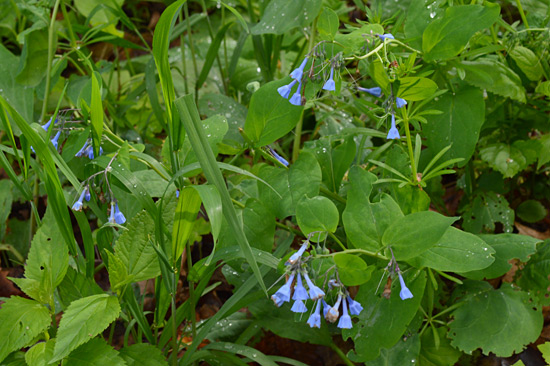
Wild Geranium (Geranium maculatum)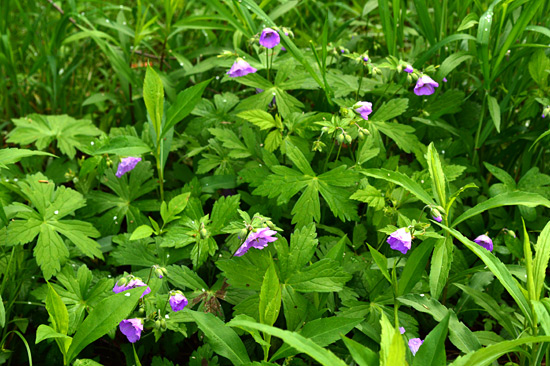
I believe this is a stand of Woodland Phlox (Phlox divaricata).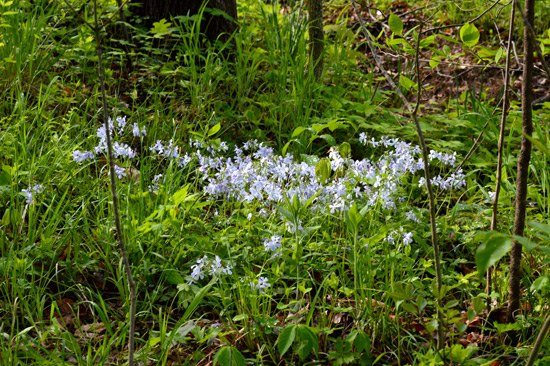
Celandine-Poppy (Stylophorum diphyllum)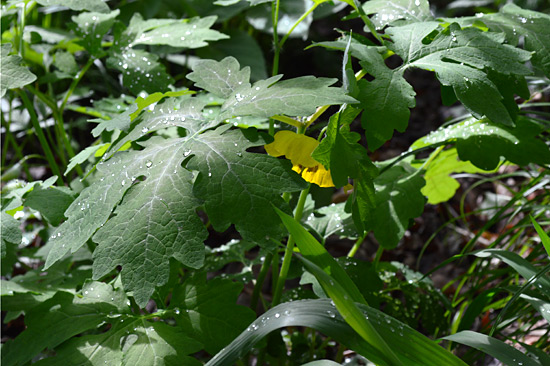
Dwarf Larkspur (Delphinium tricorne)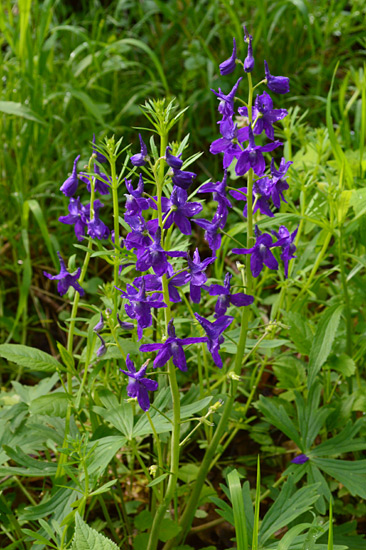
Along the edges of the woods was this pretty, flowering, understory tree. I immediately thought “viburnum” because of the blooms. However, the leaves were throwing me a bit.
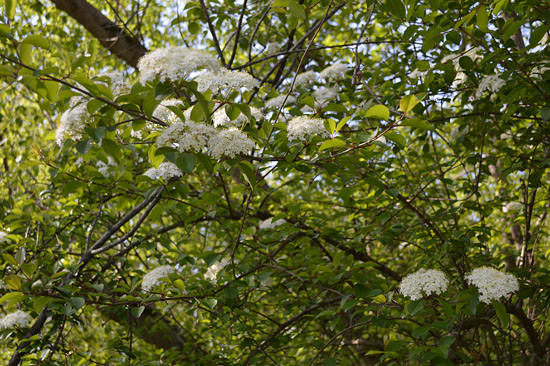
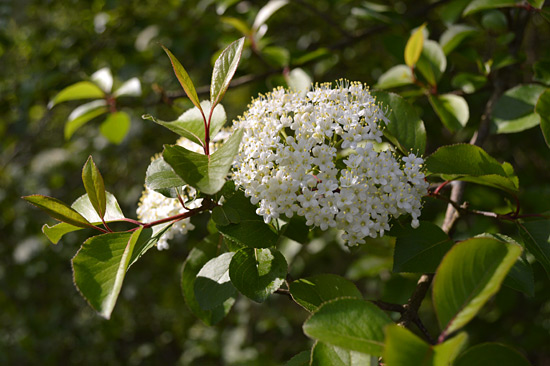
I looked it up when I returned home and believe it to be a Blackhaw (Viburnum prunifolium). Blackhaws have glossy foliage, bloom in mid-spring, grows up to 15ft. tall, handle moist, well-drained soil (river bank), and can tolerate full sun to full shade (beneath the larger tree canopy).